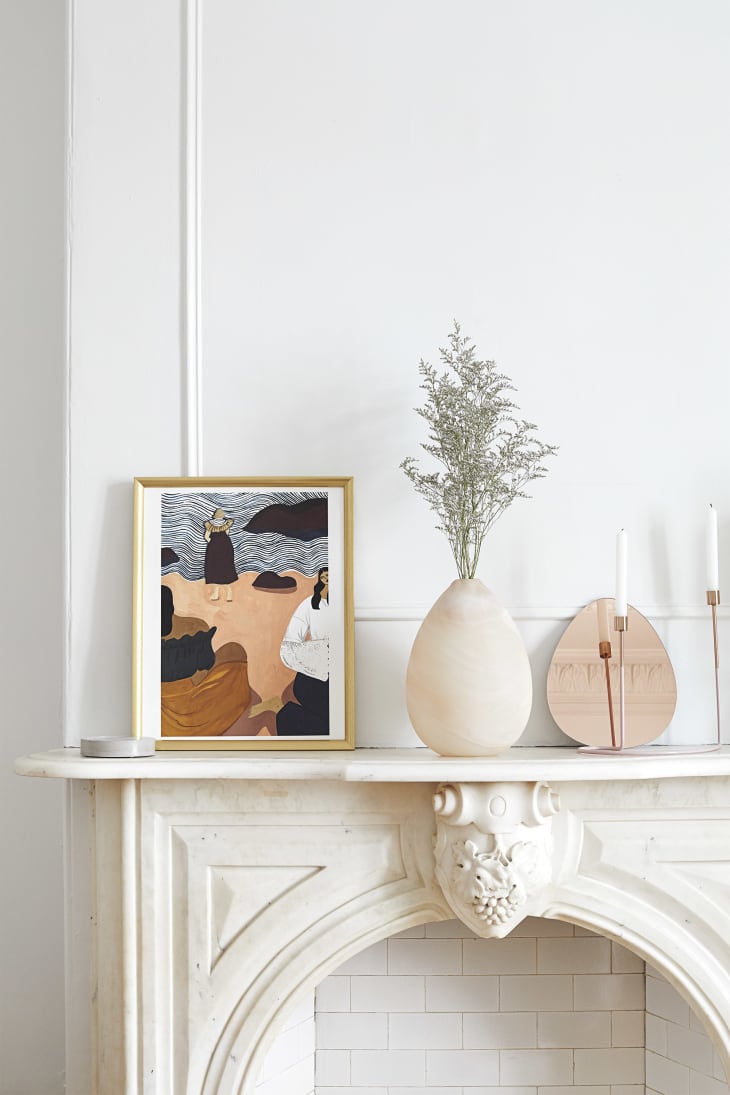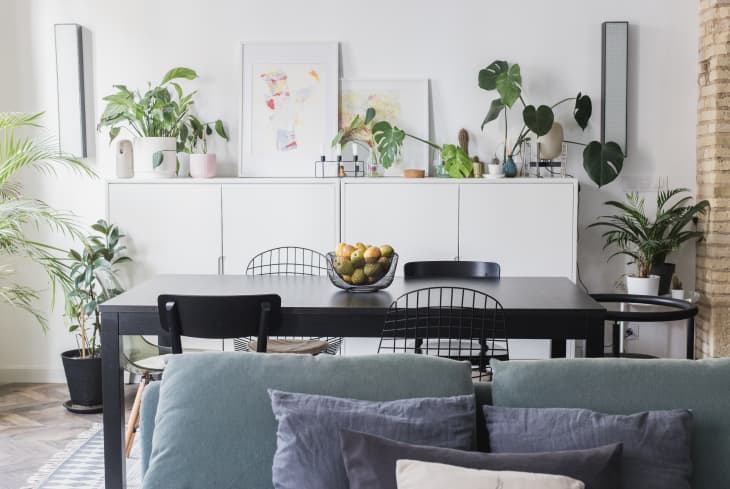Everything You Need to Know About Contemporary Design

There are a lot of misconceptions when it comes to contemporary design, and confusing this aesthetic with modern style is common. After all, the two terms are often used interchangeably even though there are some distinctions. For many, it can be difficult to pinpoint exactly what a contemporary space consists of—in reality, one can have design elements from many different styles, including Hollywood Regency, Scandi, and even boho.

Contemporary design by definition
Contemporary design can be fairly ambiguous although more often than not, it’s distinguished by a neutral palette. Unlike the sleek lines of modernism, you’ll find more rounded edges and natural elements present with a mix of pieces that look like they’ve been borrowed from other eras—think industrial, retro, and even bohemian in style. Decorist designer Natalie Tiller boils the style down to these hallmark characteristics:
- Reserved color schemes and muted tones such as beige, white, gray, and soft blues
- Furniture with clean lines or rounded edges and a strong, sound build
- Mostly solid textiles and fabrics with an emphasis on texture
- Oversized wall art that mirrors the tonal components of the room
- Polished lighting where the hardware is made from lighter metals such as brass, iron, or chrome
- Fewer but more impactful decorative accessories that result in a collected, curated look
- Minimal use of pattern, typically reserved for rugs, furniture, or an accent pillow

A brief look back
Unlike many of its design style counterparts, contemporary design is constantly evolving. This style channels what we perceive to be of-the-moment—an aesthetic that’s now “cool” and “trendy”. To fully grasp this concept, think back to preceding decades and hone in on what felt fashionable back then. In the 1920s, it was the Art Deco movement, the ‘50s were all about mid-century modern, closely followed by the post-modernism of the ‘60s, and so on and so forth. As each decade had its own distinct style, contemporary design remained a mainstay, borrowing fragments from what proceeded it, growing, and eventually adapting to the next period.

Modern vs. Contemporary
“When speaking of modern design, three things come to mind,” notes Welch. “Clean lines, meaningful pieces, and an edited approach—it’s all about minimalism and refinement.” In contrast, contemporary design is a bit more all-encompassing. It borrows elements from a variety of aesthetics, resulting in a scheme that feels fresh yet distinct, one that makes it difficult to pinpoint it to one specific era or another. Whereas modern design is typically devoid of textures, you can be sure to find plenty of tactility in contemporary design—think lush, patterned rugs, a live-edge coffee table, or even a sculptural display of branches that double as art.

Minimalism vs. Contemporary
Think of minimalism as a current subcategory of contemporary style. Made popular in recent years under the influence of Scandinavian design, its hallmark traits feature muted tones, streamlined surfaces, and unfussy decor. In a contemporary setting, you’ll find the addition of natural accents, such as a rattan chair or a brass side table, and industrial elements such as an iron chandelier or a Moroccan rug.

Bringing contemporary style home
Ready to embrace this ever-changing aesthetic? Here are a few simple ways to incorporate contemporary design into your home:
- Limit your palette to a handful of hues and avoid vibrant color juxtapositions
- Paint your walls in a soothing shade of beige or in a timeless gray. This will allow you to layer in accents that offer a splash of contrast such as a wrought iron chandelier or a blue velvet sofa
- Bethea suggests bringing in rattan and wicker in the form of baskets, pendant lighting, and natural woven areas rugs
- Potted plants such as a fiddle leaf fig tree or a rubber plant are prime examples of contemporary plants
- Introduce a reflective detail by way of a lucite coffee table, a glossy lacquer tray, or bookcases with glass doors
In sum, “contemporary design gives you the essence of now,” says Welch. “Similar to the feeling you get when you walk into a new, swanky hotel lobby or restaurant, and they have all the pieces that you’ve seen on Pinterest or Instagram.” Seeing these neutral, textural elements within the comforts of your own home is pretty hard to rival, and that’s what makes contemporary style so soothing and appealing.
source: https://www.apartmenttherapy.com/contemporary-design-36764219
